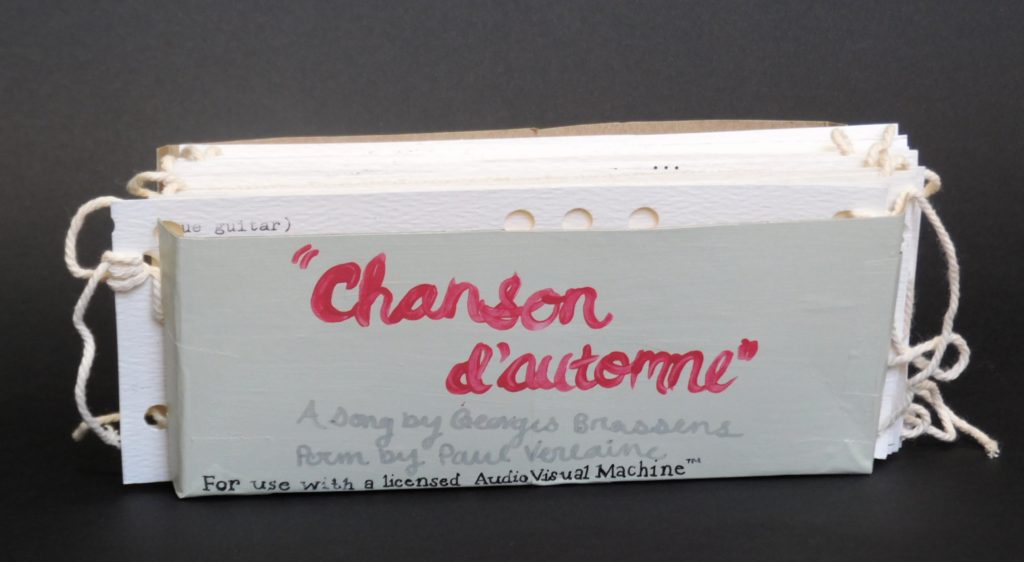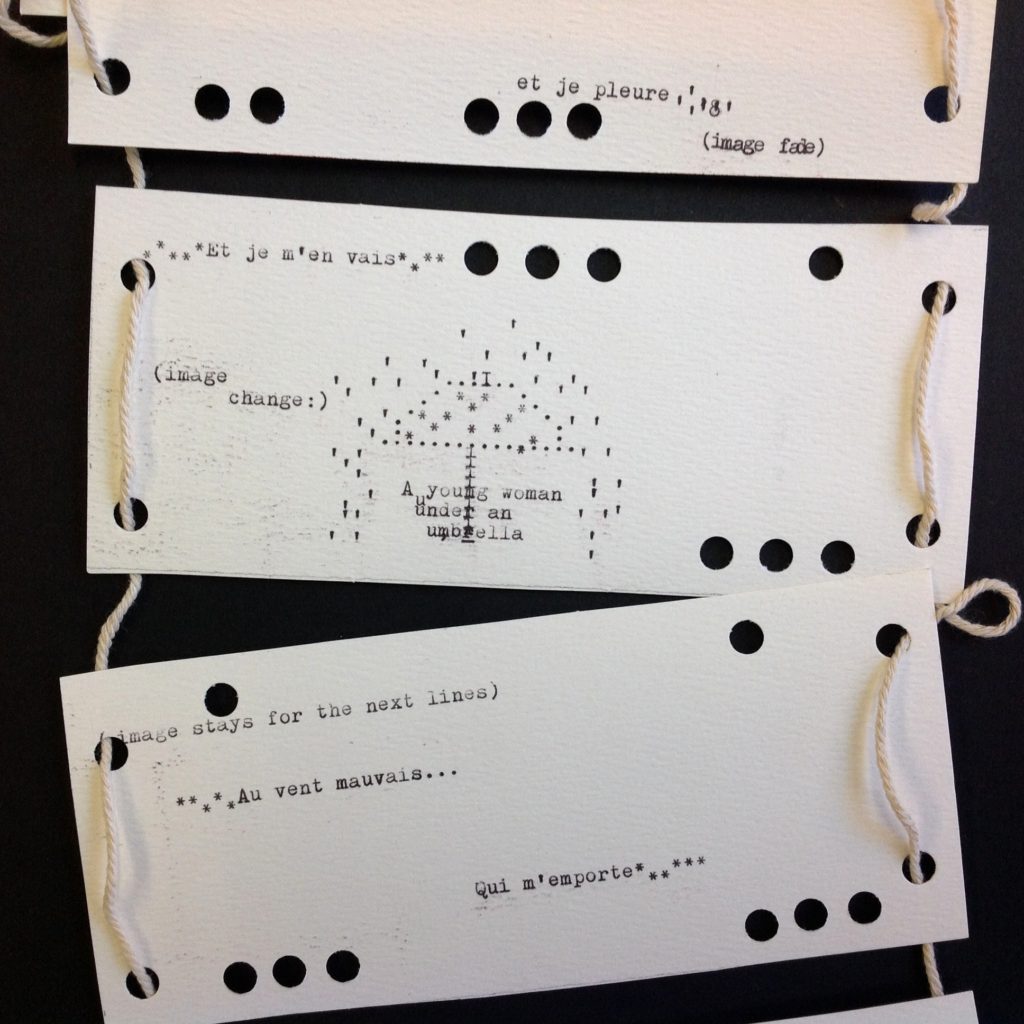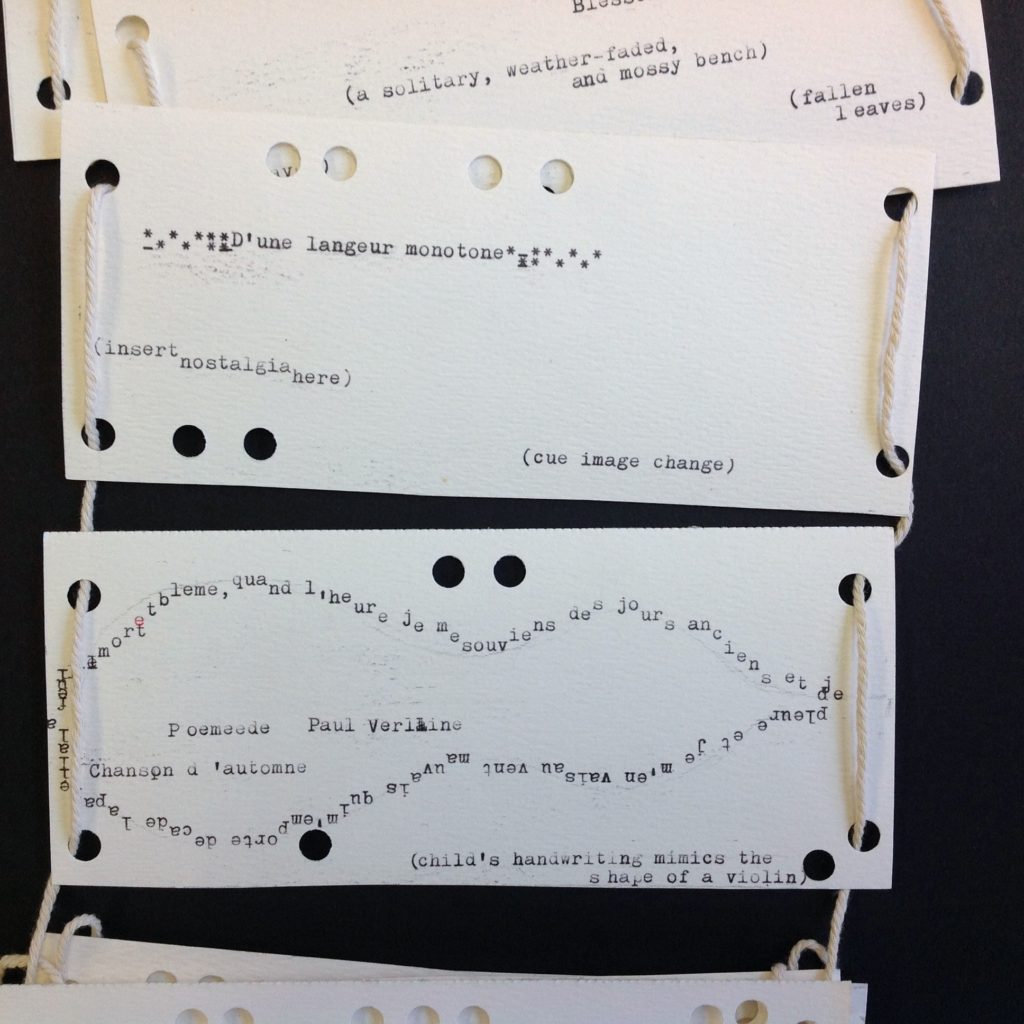This project began with the desire to take apart a piano and make it paint a song. Part of this impulse was certainly focused on the novelty of the idea, but most of it came from an interest in translation across media — how do you represent a certain type of media in another vehicle while preserving the original intent? In the piano project, painting the hammers to record the hammer strikes on paper would be, in theory, an alternative way to represent audio in a visual way without having to be able to read sheet music.
This, in a somewhat roundabout way, led to a thought process about translation across media in digital culture. For example, every day, we use and convert certain types of files into others (i.e. a Word document into PDF, or an MP3 into a WAV file), and yet almost none of us have any idea how this happens. Programming scripts, and to dig even deeper, binary coding itself, are things that most people understand and even fewer of us know how to manipulate. These, and other non-physical concepts related to digital technology (for example, the cloud) are an inherent part of our daily lives and yet it is only specialized experts that can explain how they work. When converting a file from one form to another, a program or programmer does it for us and we often know why we want the change to happen, but who among us can say what it is doing at a deeper than superficial level? As we grow more dependent on digital technology, it grows to be more and more complex and forces us to accept more and more of the unknown in both crucial and trivial parts of our daily lives.

The piano project, because it involved making audio into a physical, readable thing through a striking action, called to mind the early days of computers before we discovered magnetized file storage. These were the days of punch cards, where you could actually see the program you were running because it was located on paper in the form of punched holes that you fed into the machine. Making these involved using a machine to quite literally punch a program into a card, pictured above, and because of this, the person using the computer had to be much more involved in the actual functioning of the computer. However, computers weren’t the first type of technology to incorporate punch card technology – that honor goes to the Jacquard loom.

Image source
A Jacquard loom used punch cards to perform a type of programming, but in this case, they directed loom hooks to create complex patterns that no person could remember or create, thus revolutionizing the textile industry. And like later computer programs, Jacquard loom patterns could include several hundred cards, threaded in sequence by twine. One would then feed one end of this massive chain of cards into one end of the loom and it would run the “program” for making a tapestry or other fabric products.
This project is an imagination of what a YouTube video would look like if it ran on a machine that uses a technology that is a hybrid of the Jacquard loom and computer punch cards; an alternative way of thinking about it as a translation of a current type of media built for a specific platform to a much older version of the technology that now runs that platform. The cards themselves are sized to be similar to that of Hollerith punch cards, an early prototype for IBM computer programming.
Created using a typewriter because of the similarity between typewriter action and the machine used to make the punch card, and actual punched holes, this program, as one might call it, would be run on an “AudioVisual Machine” to watch the video of Georges Brassens’ musical version of the Paul Verlaine poem “Chanson d’Automne,” chosen both for the old-timey feel that relates well to the old-fashioned technology at the foundation of this work, and for the fact that, as a musical interpretation of a poem that was then set to a sequence of images, it is in and of itself an example of how something can be translated across different kinds of media.
To view the digital content of “AudioVisual Machine,” click on this hyperlink.



